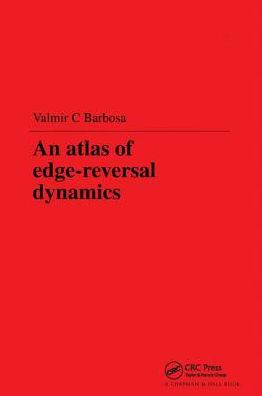An Atlas of Edge-Reversal Dynamics
An Atlas Of Edge-Reversal Dynamics is the first in-depth account of the graph dynamics system SER (Scheduling by Edge Reversal), a powerful distributed mechanism for scheduling agents in a computer system. The study of SER draws on strong motivation from several areas of application, and reveals very clearly the emergence of complex dynamic behavior from very simple transition rules. As such, SER provides the opportunity for the study of complex graph dynamics that can be applied to computer science, optimization, artificial intelligence, networks of automata, and other complex systems.
In Part 1: Edge-Reversal Dynamics, the author discusses the main applications and properties of SER, provides data from statistics and correlations computed over several graph classes, and gives an overview of the algorithmic aspects of the construction of the catalogue, thus summarizing the methodology and findings of the cataloguing effort. Part 2: The Atlas, comprises the atlas proper-a catalogue of graphical representations of all basins of attraction generated by the SER mechanism for all graphs in selected classes.
An Atlas Of Edge-Reversal Dynamics is a unique and detailed treatment of SER. Along with the catalogue, discussions of SER in the contexts of resource-sharing and automaton networks and a comprehensive set of references make this an important resource for researchers and graduate students in graph theory, discrete mathematics, and complex systems.
1101590050
In Part 1: Edge-Reversal Dynamics, the author discusses the main applications and properties of SER, provides data from statistics and correlations computed over several graph classes, and gives an overview of the algorithmic aspects of the construction of the catalogue, thus summarizing the methodology and findings of the cataloguing effort. Part 2: The Atlas, comprises the atlas proper-a catalogue of graphical representations of all basins of attraction generated by the SER mechanism for all graphs in selected classes.
An Atlas Of Edge-Reversal Dynamics is a unique and detailed treatment of SER. Along with the catalogue, discussions of SER in the contexts of resource-sharing and automaton networks and a comprehensive set of references make this an important resource for researchers and graduate students in graph theory, discrete mathematics, and complex systems.
An Atlas of Edge-Reversal Dynamics
An Atlas Of Edge-Reversal Dynamics is the first in-depth account of the graph dynamics system SER (Scheduling by Edge Reversal), a powerful distributed mechanism for scheduling agents in a computer system. The study of SER draws on strong motivation from several areas of application, and reveals very clearly the emergence of complex dynamic behavior from very simple transition rules. As such, SER provides the opportunity for the study of complex graph dynamics that can be applied to computer science, optimization, artificial intelligence, networks of automata, and other complex systems.
In Part 1: Edge-Reversal Dynamics, the author discusses the main applications and properties of SER, provides data from statistics and correlations computed over several graph classes, and gives an overview of the algorithmic aspects of the construction of the catalogue, thus summarizing the methodology and findings of the cataloguing effort. Part 2: The Atlas, comprises the atlas proper-a catalogue of graphical representations of all basins of attraction generated by the SER mechanism for all graphs in selected classes.
An Atlas Of Edge-Reversal Dynamics is a unique and detailed treatment of SER. Along with the catalogue, discussions of SER in the contexts of resource-sharing and automaton networks and a comprehensive set of references make this an important resource for researchers and graduate students in graph theory, discrete mathematics, and complex systems.
In Part 1: Edge-Reversal Dynamics, the author discusses the main applications and properties of SER, provides data from statistics and correlations computed over several graph classes, and gives an overview of the algorithmic aspects of the construction of the catalogue, thus summarizing the methodology and findings of the cataloguing effort. Part 2: The Atlas, comprises the atlas proper-a catalogue of graphical representations of all basins of attraction generated by the SER mechanism for all graphs in selected classes.
An Atlas Of Edge-Reversal Dynamics is a unique and detailed treatment of SER. Along with the catalogue, discussions of SER in the contexts of resource-sharing and automaton networks and a comprehensive set of references make this an important resource for researchers and graduate students in graph theory, discrete mathematics, and complex systems.
250.0
In Stock
5
1

An Atlas of Edge-Reversal Dynamics
380
An Atlas of Edge-Reversal Dynamics
380
250.0
In Stock

Product Details
| ISBN-13: | 9781138411951 |
|---|---|
| Publisher: | Taylor & Francis |
| Publication date: | 07/27/2017 |
| Series: | Chapman & Hall/CRC Research Notes in Mathematics Series |
| Pages: | 380 |
| Product dimensions: | 6.12(w) x 9.19(h) x (d) |
From the B&N Reads Blog
